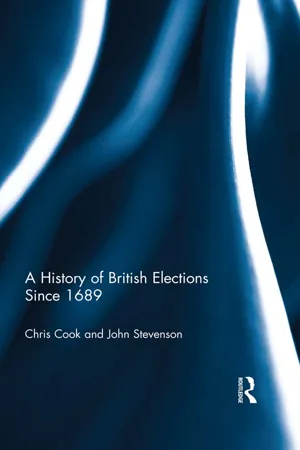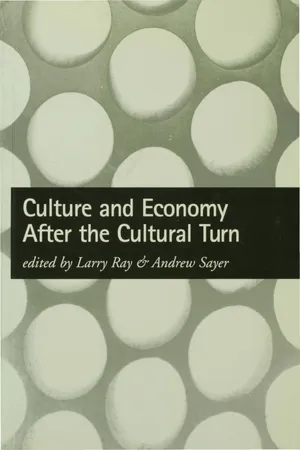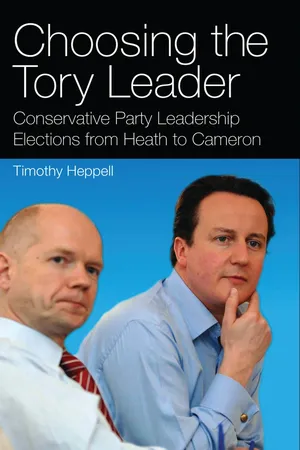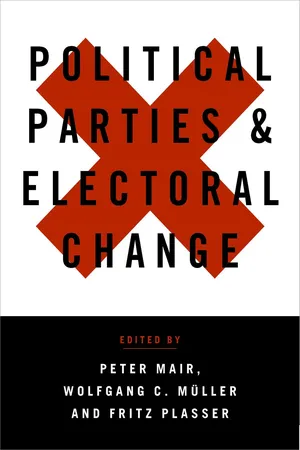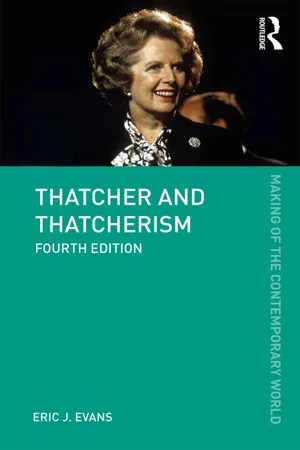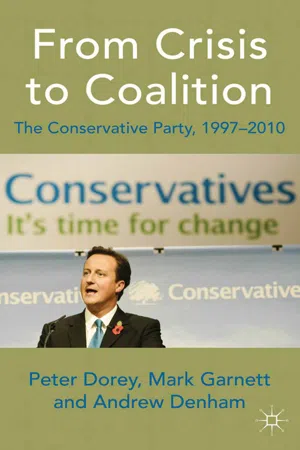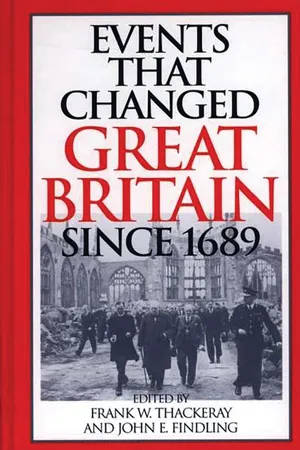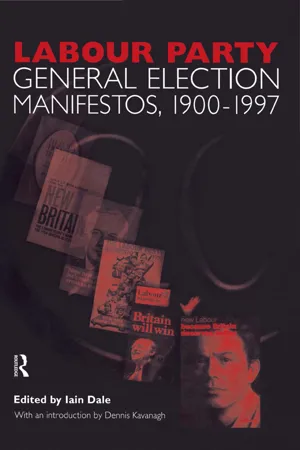History
General Election 1979
The General Election of 1979 in the United Kingdom resulted in a victory for the Conservative Party, led by Margaret Thatcher. This election marked the beginning of a new era in British politics, as Thatcher's government implemented significant economic and social reforms. The election is often remembered for its impact on the country's direction and the subsequent changes brought about by Thatcher's policies.
Written by Perlego with AI-assistance
Related key terms
1 of 5
11 Key excerpts on "General Election 1979"
- eBook - PDF
The Politics of the Thatcher Revolution
An Interpretation of British Politics 1979 - 1990
- G. Fry(Author)
- 2015(Publication Date)
- Palgrave Macmillan(Publisher)
2 The Conservative Ascendancy: The Pattern of British Politics, 1979–90 Three Tory General Election victories After the excitements of the Winter of Discontent and the Labour Govern- ment’s dramatic fall and Airey Neave’s murder by Irish terrorists at the outset of the campaign, the General Election of 3 May 1979 proved to be an anti climax, not least because some form of Conservative victory was always over- whelmingly the most likely outcome. With the Tories having no particular need to win the voters over, and, of course, no wish to alarm the electorate, what was simply called The Conservative Manifesto 1979 was a cautious docu- ment, which, indeed, stated that ‘those who look in these pages for lavish promises or detailed commitments on every subject will look in vain’. 1 Only 76 per cent of those entitled to vote in the 1979 Election did so. The Con- servatives secured 43.9 per cent (13,697,923) of the votes cast, and 339 seats, which meant that they had a majority of 43 in the House of Commons. The Labour Party obtained 37 per cent (11,532,218) of the votes cast, and 269 seats. The Liberals attracted 13.8 per cent (4,313,204) of the votes cast, and 11 seats. The Scottish and Welsh Nationalists both won 2 seats, and 12 MPs were also elected for other parties in Northern Ireland. 2 ‘By any of the meas- ures of swing, the Conservatives secured the biggest net movement between the two largest parties at any Election since 1945,’ the relevant Nuffield Study observed, ‘This substantial swing produced the decisive outcome of the Election; it gave the Conservatives as large a plurality of votes (7 per cent) over the next largest party as any party has enjoyed since Labour’ s 1945 landslide – larger, in fact, than the 1955 and 1959 Conservative victories which produced bigger Parliamentary majorities.’ 3 In terms of postwar politics, then, the Con- servative victory in 1979 was a remarkable achievement. - eBook - PDF
The Scottish Electorate
The 1997 General Election and Beyond
- A. Brown, D. McCrone, L. Paterson, Paula Surridge(Authors)
- 1998(Publication Date)
- Palgrave Macmillan(Publisher)
26 The Scottish Electorate This chapter outlines the background to the election campaign before assessing the results of the election and the consequences for Scottish and British politics. In Chapter One we identified four key dates in Scottish political history prior to 1997, namely 1832, 1886, 1922 and 1974. Similarly, we can highlight three key general elections in the post-war period: • The election of the Labour government in 1945 committed to developing and expanding the welfare state and to combating unemployment through the use of Keynesian demand management. • The return of a Labour government in 1964 after thirteen years of Conservative rule on a platform of major social reforms. • The election of the first Thatcher government in 1979 promising a radical break with the politics of the so-called post-war consensus and offering a future based on monetarism, the rolling back of the state and the adherence to free market principles. The general election of 1997 promises to go down in history on several grounds, not least because of the number of records broken (Norris, 1997), but also because of the new Labour government's programme of constitutional change. In the first session of Parliament the government outlined its plans to hold referendums on devolution in Scotland and Wales, to hold a referendum on the establishment of a strategic authority for London including the election of a mayor, and to set up regional development agencies in England. Plans for introducing proportional representation for elections to the European Parliament were announced, and a freedom of information White Paper was published. Other proposals for reforming the House of Lords and introducing electoral reform for the House of Commons are being considered. - eBook - ePub
- Chris Cook, John Stevenson(Authors)
- 2014(Publication Date)
- Routledge(Publisher)
For the Liberals themselves, the election was an unmitigated disaster: their representation in Parliament was reduced from nine MPs to six; their plight was surpassed only by that of the Communist Party which received a derisory 0.07 per cent of the poll. Once again, the results could be claimed as a moral victory for both the major parties. The Conservatives had won a majority of parliamentary seats contested; the Labour Party, though defeated, had won more votes than ever before and for the third time since the war had secured more votes in an election than the Conservative Party.The election also marked a period of two-party electoral politics in Britain that was to last until the 1970s. As Table 7.1 shows, from 1951 to 1970 the vote of the two main parties never fell below 87.5 per cent.Table 7.1 Major vs. minor parties’ share of votes and seats, 1951–70Con. and Lab. combined Third and minor parties Year % of total vote % of total vote % of total vote % of total vote 1951 96.8 98.6 3.2 1.4 1955 96.1 98.6 3.9 1.4 1959 93.2 98.9 6.8 1.1 1964 87.5 98.6 12.5 1.4 1966 88.8 97.8 11.2 2.2 1970 89.4 98.1 10.6 1.9 Source: Butler, British General Elections, 79 .Given the strength of the Labour vote from 1945 to 1951, few could have realised that the 1951 election would inaugurate a long period of 13 years of Conservative rule during which Labour suffered serious infighting and the Liberals (at least until the Orpington by-election of 1962) remained on the fringes.The General Election of 1955
The background
The Conservatives entered the 1955 election against a background of many favourable conditions giving them cause for optimism. The resignation of Churchill as prime minister on 6 April 1955, and the succession of Sir Anthony Eden, provided the ideal opportunity to call a snap election against a background of rising living standards, an electioneering Budget and the end of the rationing of the immediate post-war years. Moreover the Conservatives could make much capital out of Nye Bevan’s resignation back in April 1951 – pointing to the (unlikely) scenario of the Bevanites taking control of the Labour Party.Moreover, the by-elections of 1951–55 had indicated popular support for the Conservatives. Not a single one had been lost by the Government since 1951, and South Sunderland had been gained from Labour in 1953. The 1955 municipal elections had produced good results for the Government and the opinion polls showed a majority in favour of continuing Conservative rule. The election campaign was the quietest and most uneventful in recent history. With the Conservative programme United for Peace and Progress - eBook - ePub
Breaking the deadlock
Britain at the polls, 2019
- John Bartle, Nicholas J. Allen, John Bartle, Nicholas J. Allen(Authors)
- 2021(Publication Date)
- Manchester University Press(Publisher)
7 2019: a critical election? Jane Green When we ask whether 2019 was a critical election, what are we really trying to establish? 1 This question is about whether an enduring electoral realignment has taken place in Britain, and, if so, how the realignment has taken place and whether the decisive point in that process was the 2019 general election. The question demonstrates how we might easily misunderstand the 2019 British general election, a contest that Boris Johnson sought to ‘get Brexit done’ and which finally secured the Conservative parliamentary majority necessary to pass the EU withdrawal agreement. The question also requires us to think about any ‘realignment’ in the context of the long-term trend in partisan dealignment in the electorate. 2 Has an electoral alignment provided a new form of stability in electoral behaviour, replacing the once deeper, socialised party attachments that used to characterise British elections? The question is also important for our national political parties. Interpreting what happened – and did not happen – in the 2019 election will determine how they respond and what happens next. Parties implement the lessons of electoral victories and losses. They adapt their strategies and policies and change leaders. Learning the right lessons, therefore, has important long-term political consequences. The wrong lessons are likely to be learned if attention is focused only on the outcomes of elections – for example, the Conservatives’ loss of their majority in 2017 (characterised as Theresa May’s ‘disastrous’ campaign) and their success in winning a comfortable majority in 2019 (characterised as Boris Johnson’s ‘triumphant’ campaign). Such a limited comparison risks writing off the underlying changes that were highly significant in the one and exaggerating the degree to which one dramatic change affected the other - eBook - PDF
- Larry Ray, Andrew Sayer, Larry Ray, Andrew Sayer(Authors)
- 1999(Publication Date)
- SAGE Publications Ltd(Publisher)
10 The Culture Did It: Comments on the 1997 British General Election Mary Evans In May 1997, the British Labour Party won a massive electoral victory over the Conservative Party. After eighteen years of Conservative rule, a period which many commentators saw as bringing about the transfor-mation of British political culture, the apparent hegemony of Thatcherism was overthrown. To some observer s of British politics the 1997 General Election was very spE':cifically about issues such as the level of funding of state education and the National Health Service; to others, what was involved were more complex questions about the relationship between culture and politics, and in particular the cultural form (and specifically the cultural form of masculinity) which the Conservative Party had come to represent. This reading of the link between political event and cultural change coincided with the re-emergence in feminist debate of discussions about the material and the cultural. Nancy Fraser (1998) and Judith Butler (1998) took up issues which had been raised in the 1970s about the origin of women's subordination. In that decade writers such as Heidi Hart-mann had attempted to 'marry ' (for such was the term used by Hartmann (1979)) Marxism and feminism and had argued that the needs of capital-ism were such as to demand a separation of home and workplace, a separation which brought with it the exclusion of women from paid work. This account of the origin of women's exclusion from paid work (and with it the public and political world) was questioned by authors who argued that although an effect of capitalism had been the separa-tion of home and workplace (and the relegation of women to the home) this was not inevitable. - eBook - PDF
Choosing the Tory Leader
Conservative Party Leadership Elections from Heath to Cameron
- Timothy Heppell(Author)
- 2007(Publication Date)
- I.B. Tauris(Publisher)
THE PEASANTS REVOLT? THE ELECTION OF MARGARET THATCHER The previous chapter outlined how Edward Heath became the first democratically elected leader of the Conservative Party in July 1965. His tenure as party leader proved to be a tempestuous period within the history of the Conservative Party. It was characterised by an absence of traditional Conservative statecraft: i.e. the ability to win elections (the politics of support) and the ability to govern competently (the politics of power) (Bulpitt, 1986:19-39). Under his leadership tenure the Conservative Party, the self-proclaimed natural party of government, would lose three general elections out of four (1966, February 1974 and October 1974) and their period in office, between June 1970 and February 1974, became defined by perceptions of governing incompetence and accusations of ideological betrayal (Gamble, 1988:76-78). Given that the primary requirement of the party leader is to ensure that the Conservative Party is in a position to win the next general election, it was not surprising that doubts were openly expressed by late 1974 about whether Heath could propel the Conservatives to electoral success in 1978 or 1979. The central concern surrounding Heath was the perception that he was an electoral liability; he was derided by his critics as a three-time loser (Wickham-Jones, 1997:74). His position was becoming increasingly untenable, as the rumblings of discontent surrounding his leadership extended beyond the electoral arithmetic (Gilmour and Garnett, 1998:295). His critics identified concerns about his political acumen. Doubts surrounding his leadership competence and his ideological beliefs were widely articulated from the right of the parliamentary Conservative Party. They believed that the Conservative Party had triumphed in the June 1970 general election with the intention of implementing the ‘Selsdon’ programme that had been formulated during the period in opposition. The Conservative - eBook - PDF
Political Parties and Electoral Change
Party Responses to Electoral Markets
- Peter Mair, Wolfgang C Müller, Fritz Plasser, Peter Mair, Wolfgang C Müller, Fritz Plasser(Authors)
- 2004(Publication Date)
- SAGE Publications Ltd(Publisher)
Thus, while 50 percent of Conservative identifiers claimed their allegiance was ‘very strong’ in 1970, only 29 percent did so in 1974, and just 16 percent by 1992 (Crewe et al . 1995: 47). This emphasizes the contingent nature of support that even an electorally ‘dominant’ party manages to sustain in the modern era. In addition, it must not be overlooked that the Conservatives lost four out of the five general elections held in the decade between 1964 and 1974. That party strategists perceived a need for policy development and greater sophistication in political marketing is certain, and they duly succeeded in forging the changes required to deliver a generation in power. What is interesting about the changes wrought under Thatcher is that they contrast with Labour to the extent that strategic debate was conditioned less by the perception of class cleavage decomposition than by that of national policy failure. As I have implied, in seeking to maintain its political relevance in the 1950s, the Conservative Party 28 Political Parties and Electoral Change became a willing partner to the Keynesian-welfarist-mixed economy consensus which endured over a quarter of a century or more. Yet by the mid-1970s the party’s strategists saw that the Tories as much as Labour had become elec-torally vulnerable as a result of the various manifestations of failure which by then had afflicted the consensus policy model (stagflation, growing public debt, industrial unrest and an unpopular public sector). The Thatcherite response was consequently driven by the need to distance the party from the established policy consensus. Aided by the temporary implosion of the opposition, this strategic and organizational response was enough to earn the party a widely admired reputation as an electoral force. - eBook - PDF
- Eric J. Evans(Author)
- 2018(Publication Date)
- Routledge(Publisher)
When Harold Wilson won narrowly in 1964, they had formed 63 per cent. Worse, manual workers were beginning to turn against the trade unions – alienated, no doubt, by the Winter of Discontent. 9 By contrast, Tory policies which stressed wider home-ownership proved very popular, particularly among the better-off working classes and lower middle classes of southern England. Electoral geography was of much greater significance than short-term swings or the precise numbers of seats won. Historically stronger in England than elsewhere in the UK (see Chapter 13) the Conservatives also performed better in Britain’s rural areas and small towns than in its indus-trial heartlands. 10 Within England, however, the Tories usually showed a reasonable spread of geographical support. The 1979 election was differ-ent. Pro-Conservative swings were much smaller in the north of England than in the south and Midlands. Compared with 1955, when, in terms of seats, the Tory lead over Labour was very similar to that in 1979, Thatcher’s Conservative Party won 34 more seats in the south and Midlands, 20 fewer in the north of England and 14 fewer in Scotland. Thatcher was winning where the economy was relatively strong and losing where it was contract-ing. Clearly her message of effort, thrift and individual self-reliance struck a chord where economic opportunity was likely to reward these virtues and spectacularly not where jobs were in much shorter supply. As Peter Jenkins Election and depression, 1979–81 21 put it: ‘Labour was becoming the party of decline, the Conservative Party the party of growth. Slowly the political culture of the south was moving northwards . . . colonising the Midlands, ghettoising Labour’s strength in the inner cities and the urban centres of manufacturing decline’. 11 This chasm would widen over the next decade and is one of the main reasons why Thatcher’s period in office proved so bitter and so contro-versial. - eBook - PDF
From Crisis to Coalition
The Conservative Party, 1997-2010
- P. Dorey, M. Garnett, A. Denham(Authors)
- 2011(Publication Date)
- Palgrave Macmillan(Publisher)
The 1997 general election result only confirmed what most observers had known for some time – namely, that Labour had expunged the most pressing reasons for its electoral failures since 1979, exposed the inherent weakness in the position of its chief opponents, and thus re-established itself as a serious player for years to come. For all Cameron’s achievements, only after the next election will it be possible to decide whether or not the Conservatives have truly recovered from their own mistakes and the challenge posed by New Labour. Although they are the dominant force within the coalition formed in May 2010 it is still possible to argue that they remain a party in crisis, more than two decades after Margaret Thatcher was removed from office. Notes 1. Dennis Kavanagh and Philip Cowley , The British General Election of 2010, Basingstoke, Palgrave Macmillan, 2010, pp.159–61. 2. Conservative Party , Invitation to Join the Government of Britain: The Conservative Manifesto 2010, 2010, p.113. 3. Nicholas Watt, ‘There’s No Such Thing as “Big Society”’, Senior Tories Tell Cameron’, The Guardian, 20 April 2010. 4. Quoted in The Guardian, 8 May 210. The Conservatives in the 2010 General Election, and its Aftermath 197 5. See, for example, ConservativeHome, Falling Short: The Key Factors that Contributed to the Conservative Party’ s Failure to Win a Parliamentary Majority , 2010, p.13; . 6. Ipsos MORI Political Monitor, March 2010. 7. . 8. David Denver, ‘The Results: How Britain Voted’, Parliamentary Affairs, 63.4 (2010), p.591. 9. Nicholas Jones, Campaign 2010: The Making of the Prime Minister, London, Biteback Books, 2010, p.315. 10. . 11. Ibid. 12. Justin Fisher, ‘Party Finance: Normal Service Resumed?’, Parliamentary Affairs 63.4 (2010), p.790. - eBook - PDF
- Frank W. Thackeray, John E. Findling, Frank W. Thackeray, John E. Findling(Authors)
- 2002(Publication Date)
- Greenwood(Publisher)
In spring 1982 foreign issues unexpectedly grabbed the prime minister's attention when Argentina's military dictatorship seized the Falkland Is- lands, an isolated and underpopulated British possession in the South At- lantic Ocean. In a campaign lasting more than two months, British forces regained the islands at the cost of 255 British lives. Victory in the Falklands helped to rescue Thatcher and the Conserva- tives from increasing unpopularity with the British voters and to set the stage for a Conservative electoral victory in June 1983. Helped also by a fractured Labour Party that had taken a sharp turn to the left, Thatcher and the Conservatives won a 144-seat majority in the House of Commons, a 178 Events That Changed Great Britain margin that encouraged the prime minister to continue her neoconservative initiatives. After purging her cabinet of the remaining wets, Thatcher embarked upon a series of privatization measures designed to turn over economic as- sets held by the British government to individuals and corporations. In other words, Thatcher set out to destroy one of the most important pillars upon which British socialism rested. In 1984 British Telecom was privat- ized; this was soon followed by British Gas (1986), British Airways (1987), and the electricity and water utilities (1990). Thatcher also dealt a heavy blow to the unions. In 1984 the miners, the most unreconstructed, leftist trade union, went on strike. Thatcher met the challenge head on. She refused to compromise—going so far as to call the miners the "enemy within"—and outlasted her opponents in the course of a bitter strike that lasted almost one year and resulted in a complete victory for Thatcher's government. During this period, Prime Minister Thatcher became more prominent on the global scene. Together with her U.S. counterpart, President Reagan, she engaged Mikhail Gorbachev, the new Soviet leader, in a series of discus- sions and meetings that helped put an end to the Cold War. - Dennis Kavanagh, Iain Dale, Iain Dale, Iain Dale Nfa(Authors)
- 2015(Publication Date)
- Routledge(Publisher)
LABOUR PARTY GENERAL ELECTION MANIFESTO 1959Britain belongs to you
The Labour Party’s policy for consideration by the British people
Date of Election Thursday 8 October Party Leader Hugh Gaitskell Candidates 621 MPs 258 Votes 12,215,538 % of Vote 43.8% We welcome this Election; it gives us, at last, the chance to end eight years of Tory rule. In a television chat with President Eisenhower, Mr Macmillan told us that the old division of Britain into the two nations, the Haves and the Have Nots, has disappeared. Tory prosperity, he suggested, is shared by all. In fact, the contrast between the extremes of wealth and poverty is sharper today than eight years ago. The business man with a tax-free expense account, the speculator with tax-free capital gains, and the retiring company director with a tax-free redundancy payment due to a take-over bid – these people have indeed ‘never had it so good’.It is not so good for the widowed mother with children, the chronic sick, the 400,000 unemployed, and the millions of old age pensioners who have no adequate superannuation. While many of those at work have been able to maintain and even improve their standard of living by collective bargaining, the sick, the disabled and the old have continually seen the value of state benefits and small savings whittled away by rising prices. Instead of recognising this problem as the greatest social challenge of our time, the Prime Minister blandly denies it exists.The danger of complacency
One of the dangers we face as a nation is the mood of complacency and self-deception engendered by the vast Tory propaganda machine. The Tory Manifesto claims that the Government has ‘now stabilised the cost of living while maintaining full employment’ and that it is ‘succeeding in creating one nation at home’.These claims are largely without foundation. The cost of living has not been stabilised. Full employment has not been maintained. There are many millions of ‘have nots’ in Britain. The best way to ensure you do not reach your goal is to pretend that you are there already. This is what the Tories have been doing.
Index pages curate the most relevant extracts from our library of academic textbooks. They’ve been created using an in-house natural language model (NLM), each adding context and meaning to key research topics.


